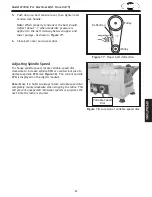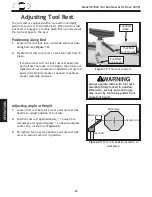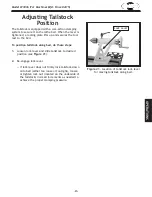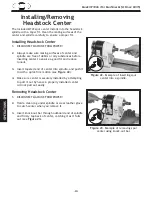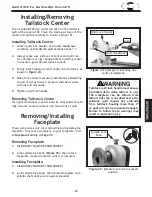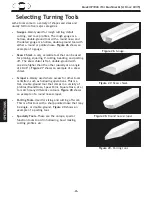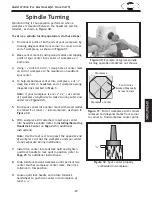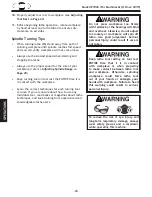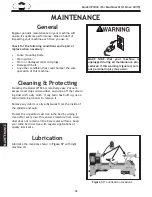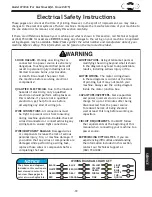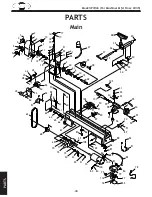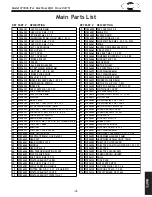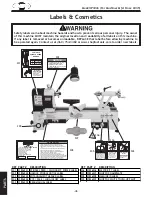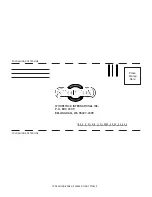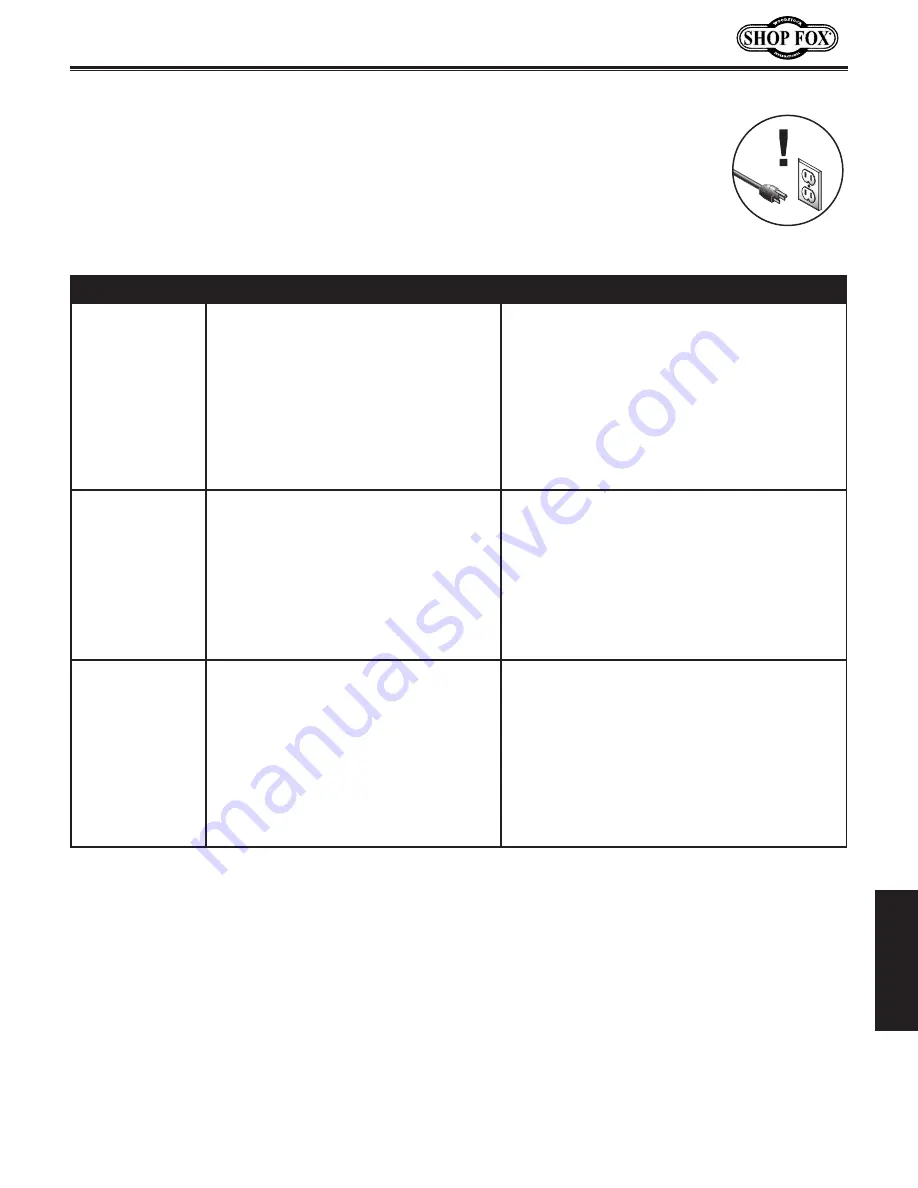
-35-
Model W1836 (For Machines Mfd. Since 04/15)
SE
RV
IC
E
Troubleshooting
Review the troubleshooting and procedures in this section if a problem develops with
your machine. If you need replacement parts or additional help with a procedure, call
our Technical Support.
Note: Please gather the serial number and manufacture date of
your machine before calling. Also, if available, have your original purchase receipt on
hand.
Motor and Electrical
Symptom
Possible Cause
Possible Solution
Machine does not
start or a breaker
trips.
1. Safety key removed from paddle switch/
switch at fault.
2. Incorrect power supply voltage.
3. Power supply circuit breaker tripped or
fuse blown.
4. Motor wires connected incorrectly.
5. Wiring open/has high resistance.
6. Motor brushes at fault.
7. Potentiometer/variable-speed dial control-
ler at fault.
8. Motor at fault.
1. Insert safety key into switch; replace if not working
properly.
2. Ensure correct power supply voltage.
3. Ensure circuit is sized correctly and free of shorts.
Reset circuit breaker or replace fuse.
4. Correct motor wiring connections.
5. Check/fix broken, disconnected, or corroded wires.
6. Test/replace.
7. Test/replace.
8. Test/repair/replace.
Machine stalls or is
underpowered.
1. Machine undersized for task.
2. Workpiece material not suitable for
machine.
3. Feed rate/cutting speed too fast.
4. Belt(s) slipping.
5. Motor wired incorrectly.
6. Plug/receptacle at fault.
7. Motor overheated.
8. Pulley slipping on shaft.
1. Use sharp chisels; reduce feed rate/depth of cut.
2. Only cut wood.
3. Decrease feed rate/cutting speed.
4. Tension/replace belt(s); ensure pulleys are aligned
and free of oil or grease.
5. Wire motor correctly.
6. Test for good contacts/correct wiring.
7. Clean motor, let cool, and reduce workload.
8. Replace loose pulley/shaft.
Machine has vibra-
tion or noisy opera-
tion.
1. Motor or component loose.
2. Belt worn, damaged, or loose.
3. Motor mount loose/broken.
4. Pulley loose.
5. Machine incorrectly mounted or sits
unevenly on bench.
6. Belt slapping cover.
7. Workpiece/faceplate at fault.
8. Motor bearings at fault.
1. Inspect/replace damaged bolts/nuts, and retighten
with thread locking fluid.
2. Inspect/replace belt.
3. Tighten/replace.
4. Re-align/replace shaft, pulley set screw, and key.
5. Tighten/replace mounting bolts in bench; relocate/
shim machine; adjust feet.
6. Replace/realign belt.
7. Center workpiece in chuck/faceplate; reduce RPM.
8. Test by rotating shaft; rotational grinding/loose
shaft requires bearing replacement.

